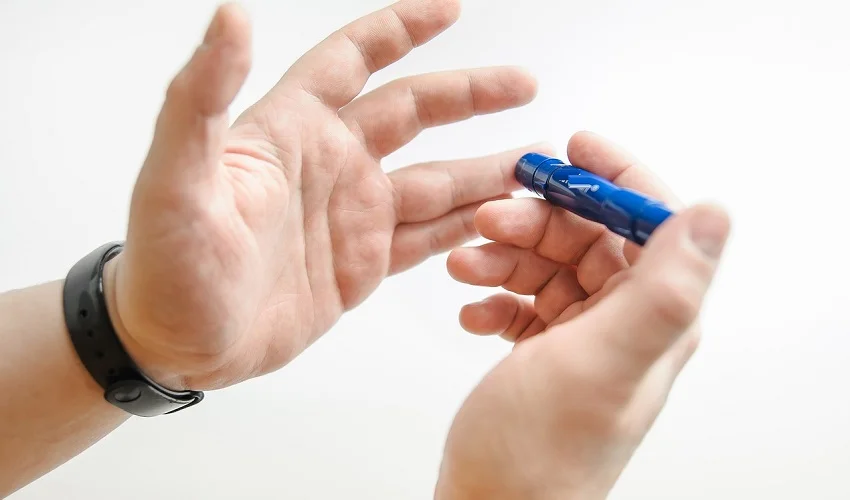Prediabetes, a prevalent yet often undiagnosed condition, affects over one-third of the American population. Characterized by elevated blood sugar levels, it serves as a precursor to type 2 diabetes. However, this condition is not irreversible. With the right interventions, prediabetes can be managed and even reversed, preventing the progression to type 2 diabetes.
Understanding Prediabetes
Prediabetes is a critical health condition marked by an impaired ability of the body to process glucose effectively, resulting in elevated blood sugar levels. This metabolic inefficiency primarily stems from two physiological issues: insulin resistance and insufficient insulin production.
Insulin Resistance: This is a common cause of prediabetes, where the body’s cells do not respond appropriately to insulin, a hormone responsible for regulating blood sugar levels. When cells become resistant to insulin, glucose accumulates in the bloodstream instead of being absorbed by the cells for energy. Factors contributing to insulin resistance include genetic predispositions, obesity, a sedentary lifestyle, and certain dietary habits.
Inadequate Insulin Production: The pancreas, an organ responsible for producing insulin, may not produce enough insulin to maintain normal glucose levels. This deficiency can be due to genetic factors, pancreatic diseases, or the gradual wearing out of pancreatic cells that produce insulin. When the pancreas cannot keep up with the body’s insulin needs, it leads to a rise in blood sugar levels.
The progression from prediabetes to type 2 diabetes occurs when these issues are not addressed. High blood sugar levels over prolonged periods can cause various health complications.
Recognizing and managing prediabetes is crucial in preventing its progression to type 2 diabetes and the associated complications.
Key Statistics
- More than 88 million Americans have prediabetes.
- Approximately 85% of affected individuals are unaware of their condition.
Reversing Prediabetes
Early detection and lifestyle modifications are crucial in reversing prediabetes. These changes not only lower blood sugar levels but also benefit overall health by regulating blood pressure and cholesterol levels.
Understanding the science behind reversing prediabetes involves a deep dive into how lifestyle changes can physiologically impact the body, altering the course of this condition. Prediabetes reversal is grounded in the body’s ability to restore its efficient use of insulin and manage blood glucose levels effectively.
Insulin Sensitivity Improvement: One of the primary goals in reversing prediabetes is to enhance the body’s sensitivity to insulin. Insulin is a hormone that regulates blood sugar levels by facilitating the entry of glucose into cells for energy. Exercise and weight loss are scientifically proven to improve insulin sensitivity. As the body becomes more sensitive to insulin, it needs less of it to manage blood glucose levels, reducing the strain on the pancreas.
Weight Loss and Fat Reduction: Excess body fat, especially around the abdomen, is closely linked to insulin resistance. Fat cells, particularly visceral fat, release pro-inflammatory substances that can impair insulin action. When weight loss occurs, these fat cells shrink and produce fewer inflammatory substances, which increases insulin sensitivity.
Muscle Mass Increase: Muscle tissue is a significant consumer of glucose in the body. Increasing muscle mass through physical activity like strength training enhances glucose uptake from the blood, lowering blood sugar levels. More muscle mass effectively means a larger area for glucose to be deposited, easing the burden on blood sugar regulation.
Dietary Impact on Blood Sugar: The type and amount of carbohydrates consumed directly affect blood sugar levels. Diets lower in refined carbohydrates and higher in fiber slow down the absorption of sugar into the bloodstream, preventing spikes in blood sugar. This helps in maintaining a more stable and normal blood sugar level throughout the day.
Metabolic Changes: Lifestyle changes that lead to weight loss and increased physical activity can bring about profound metabolic changes. These changes include improved glycemic control, better lipid profiles, and reduced blood pressure. Each of these factors plays a role in reducing the risk of developing type 2 diabetes.
Beta-Cell Function: The beta cells in the pancreas are responsible for insulin production. In the early stages of prediabetes, these cells are often overworked and may start to function poorly. Lifestyle interventions can help preserve beta-cell function by reducing the demand for insulin production, thereby slowing or preventing the progression to diabetes.
Reduced Inflammation: Chronic low-grade inflammation is linked with insulin resistance. Lifestyle changes can lead to a decrease in markers of inflammation, thereby improving insulin sensitivity and overall metabolic health.
Hormonal Regulation: Exercise, diet, and weight management can also lead to beneficial hormonal changes. For instance, better control of cortisol levels, the stress hormone, can improve insulin sensitivity. Additionally, adiponectin, a hormone released by fat cells, increases with exercise and weight loss and is known to improve insulin sensitivity.
The science of reversing prediabetes emphasizes the critical role of lifestyle modifications in restoring the body’s ability to regulate blood sugar effectively. These changes lead to a series of interconnected biological improvements, creating a healthier metabolic state that can prevent the progression to type 2 diabetes.
Timeframe for Reversal
The process of reversing prediabetes is highly individualized, with the timeframe for reversal varying significantly from person to person. This variability can be attributed to a range of factors, each playing a crucial role in determining the rate at which prediabetes can be reversed.
Starting Weight: One of the most influential factors is the individual’s starting weight. People with higher body weight may need to lose more weight to see a change in their blood sugar levels. Weight loss is a gradual process, and the amount of weight that needs to be lost to impact blood sugar levels can vary. The pace of weight loss and the body’s response to it can significantly affect how quickly prediabetes is reversed.
Physical Activity Level: The level of physical activity prior to and after a prediabetes diagnosis is another critical factor. Individuals who lead a sedentary lifestyle may take longer to reverse prediabetes as they start to incorporate exercise into their routine. On the other hand, those who are already moderately active may see quicker results as they intensify their exercise regimen.
Dietary Habits: Dietary changes are essential in reversing prediabetes, and the speed of this reversal can depend on how drastic and consistent these changes are. Switching from a diet high in processed foods and sugars to one rich in whole foods, fibers, and balanced nutrients can have a rapid impact on blood sugar levels. However, the time it takes to see these changes will vary based on individual dietary choices and consistency.
Metabolic Factors: Each person’s metabolism works differently, affecting how quickly they can reverse prediabetes. Factors such as age, gender, genetic predispositions, and existing metabolic conditions play a role in determining the metabolic rate and how the body responds to lifestyle changes.
Consistency and Adherence: The consistency and adherence to lifestyle changes significantly influence the timeframe for reversing prediabetes. Regular physical activity, maintaining a healthy diet, and following medical advice are crucial for effective and timely reversal.
Health Conditions and Medications: Coexisting health conditions, such as hormonal imbalances or cardiovascular diseases, can impact the rate of prediabetes reversal. Additionally, certain medications might influence blood sugar levels and insulin sensitivity, thereby affecting the reversal process.
It’s important to note that while the time to reverse prediabetes can vary, the long-term benefits of making and maintaining these lifestyle changes significantly outweigh the efforts. Improved blood sugar control, enhanced overall health, reduced risk of type 2 diabetes, and better quality of life are some of the long-term benefits that come with diligently managing prediabetes. Therefore, despite the variable timeframe, the focus should be on the enduring positive outcomes of lifestyle adjustments.
Risk Factors
- Age above 45 years
- Sedentary lifestyle
- Obesity
- High blood pressure
- History of gestational diabetes
- Unhealthy diet
- Smoking
Warning Signs
- Increased thirst and hunger
- Blurred vision
- Fatigue
- Frequent urination
- Slow-healing wounds
- Frequent infections
- Numbness or tingling in extremities
Diagnostic Measures
- Online prediabetes risk assessment test.
- Fasting blood sugar test.
- A1C test.
Preventive Strategies
- Regular exercise: Walking for at least 30 minutes daily reduces the risk of type 2 diabetes by approximately 50%.
- Diet modifications: Opt for whole grains, reduce sugar intake, and avoid trans fats and processed foods.
- Stay hydrated and manage stress effectively.
- Avoid excessive alcohol consumption and quit smoking.
Medical Interventions
In some cases, medications like Metformin or bariatric surgery might be recommended, especially for younger adults, individuals with obesity, or those with a history of gestational diabetes.
The Bottom Line
Prediabetes, while a serious health concern, offers an opportunity for intervention. Through lifestyle changes, regular monitoring, and possibly medical interventions, reversing prediabetes is achievable. It’s crucial to remain vigilant about one’s health and consult healthcare professionals for personalized guidance.




